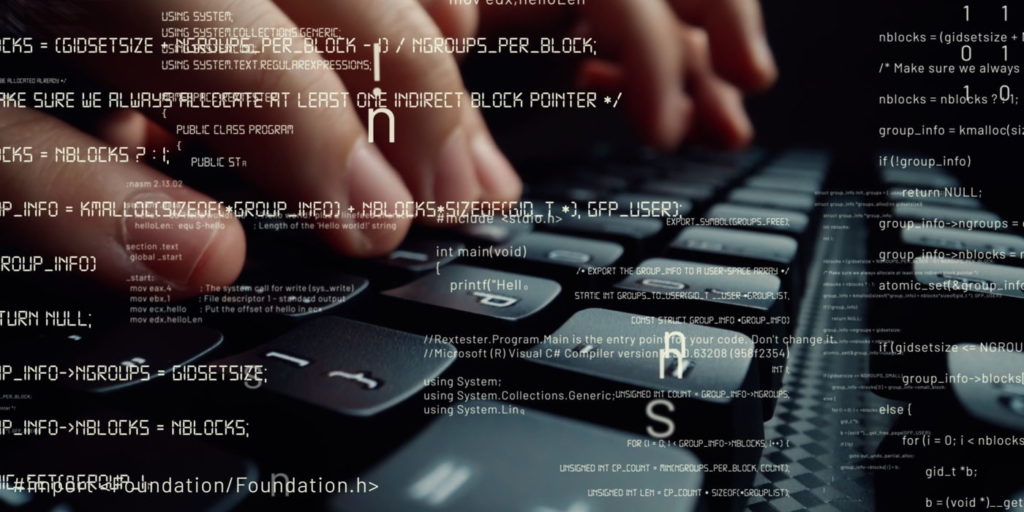PACE NONCREDIT COURSE:
Introduction to C++ Programming
Areas of Study
Course Type

Overview
Hours: 24 | Duration: 6 Weeks
Here’s your chance to learn how to program the easy way in C++. Introduction to C++ Programming is a project-oriented course. You’ll get right to programming in this course—even if you have no prior programming experience! Before you know it, you’ll be putting together programs, and you’ll see how easy programming really is.
Curriculum
A new session of each course starts monthly. If enrolling in a series of two or more courses, please be sure to space the start date for each course at least two months apart.
All courses run for six weeks, with a two-week grace period at the end. Two lessons are released each week for the six-week duration of the course. You do not have to be present when lessons are released. You will have access to all lessons until the course ends. However, the interactive discussion area that accompanies each lesson will automatically close two weeks after the lesson is released. As such, we strongly recommend that you complete each lesson within two weeks of its release.
The final exam will be released on the same day as the last lesson. Once the final exam has been released, you will have two weeks to complete all of your course work, including the final exam.
Week One
Lesson 01 – Your First C++ Program
Wednesday
In your first lesson, you’ll learn what a computer program is. What’s the best way to learn programming? You have to write programs, of course! Your first step toward writing your first program is to install VisualStudio. In this lesson, you’ll learn how to install Visual Studio on your computer and create your first program.
Lesson 02 – Understanding Your C++ Code and How to Fix Errors
Friday
You’ve created a working C++ application. In this lesson, you’ll find out what each line of C++ code means in your “Hello World!” program. You’ll also learn how this C++ code is translated to machine language that the computer understands and can execute as a running program. Finally, you’ll learn how to see and fix errors in your code.
Week Two
Lesson 03 – Data Types and Computer Memory
Wednesday
In this lesson, you’ll learn about the different areas of computer memory. You’ll find out about data types, which correspond to the different types of information a program uses, and then write a program that can determine the amount of computer memory used by different data types. This lesson also lays the foundation for variables, a very important concept in programming.
Lesson 04 – Storing Data in Variables
Friday
In this lesson, you’ll learn how to create variables of different data types to store information. You’ll find out how to declare variables, which is the first step to using them. You’ll then learn how to assign values to variables, using both the assignment operator and cin. You’ll also access and output a variable’s value.
Week Three
Lesson 05 – Letting the Computer Do the Math
Wednesday
Computers can’t think for themselves—not yet anyway. But computers can calculate faster and more accurately than humans can. In this lesson, you’ll learn how to harness the computer’s calculating power with the C++ arithmetic operators.
Lesson 06 – Letting the User Choose
Friday
Life involves choices, and so do computer programs. In this lesson, you’ll learn how to use the different C++ comparison operators and control structures so different blocks of code execute depending on the user’s choice.
Week Four
Lesson 07 – Combining Choices
Wednesday
Choices can be complicated. For example, you may want code to execute only if two choices are made, or if either of two choices are made. In this lesson, you’ll how to use nested control structures and the different C++ logical operators when more than one choice determines which block of code executes.
Lesson 08 – Repeating Code With Loops
Friday
Your parents may have told you not to repeat yourself, but code often needs to repeat. In this lesson, you’ll learn how to use loops to make code repeat until a condition is met.
Week Five
Lesson 09 – Using Arrays
Wednesday
Often, you may need to store more than one item of information, such as multiple test scores. In this lesson, you’ll find out how to use arrays to store multiple items of information. Sure, you could also just use multiple variables, but with arrays, you also can harness the power of loops, which you learned about in the last lesson.
Lesson 10 – C Strings for Storing Text
Friday
Not all information are numbers. You’ll often need to store text, such as names. In this lesson, you’ll discover how to use C strings to store non-numeric information in an array.
Week Six
Lesson 11 – Functions for Dividing and Organizing Code
Wednesday
What if your favorite textbook was just one very long paragraph with no chapters or sections? The content would be the same, but it would be much more difficult to read and follow, wouldn’t it? Similarly, code, as it gets longer and more complicated, needs to be organized. In this lesson, you’ll learn how to use functions to divide tasks and organize your code.
Lesson 12 – Saving and Retrieving Data
Friday
Microsoft Word wouldn’t be very useful if you couldn’t save your work and had to type it all over again each time you ran the program! Being able to save your work is important, but you also need to be able to load that saved work back into your program the next time you run it. In this lesson, you’ll learn how to use file input/output to store and retrieve information.
Course Requirements
Hardware Requirements: Software Requirements: Other: Instructional Material Requirements: The instructional materials required for this course are included in enrollment and will be available online.
